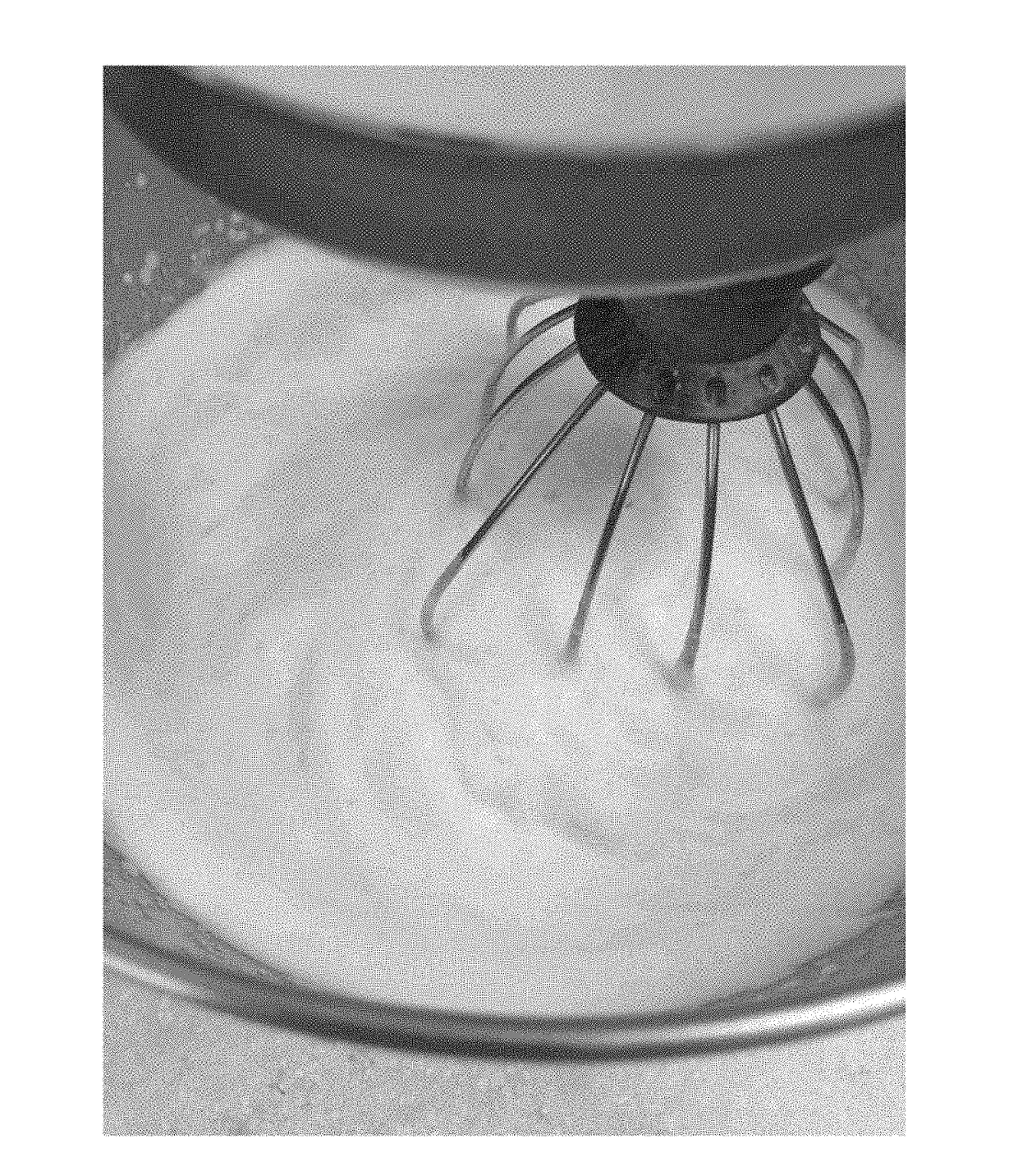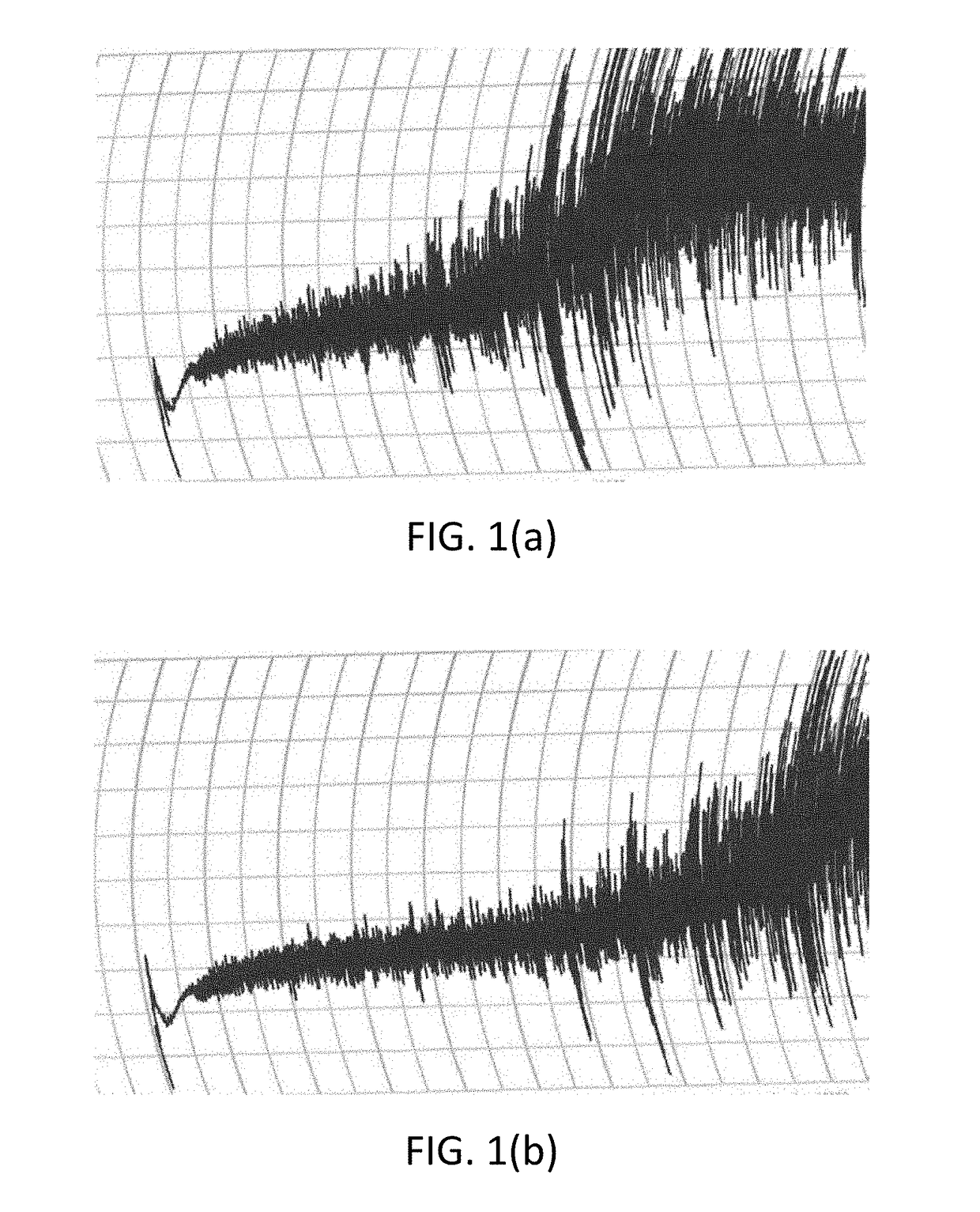L-cysteine-treated proteins with altered functionalities and preparations thereof
a technology of functionalities and proteins, applied in the field of protein composition, can solve the problems of reducing the water absorption capacity and stability of weak and medium-strong wheat flour, being considered an allergen and particularly having a serious health effect on individuals suffering from asthma, and reducing the disulfide bonds within the protein material. , to achieve the effect of reducing the disulfide bonds within the protein material
- Summary
- Abstract
- Description
- Claims
- Application Information
AI Technical Summary
Benefits of technology
Problems solved by technology
Method used
Image
Examples
example 1
[0080]20 lbs of water (110° F.) was added to a small dispersion tank. A homomixer unit (Morehouse-Cowles) was turned on and 73.5 g of malic acid was added. The mixture was homogenized for 5 minutes. (The level of malic acid is 2.7% based on gluten solids. Other levels of malic acid ranging from 0.5-15.0% can be used.) 20 lbs of high-protein wet gluten dough was slowly added. The gluten dough was obtained fresh from a gluten and starch plant and contained about 30% solids and about 90% protein, N×6.25, dry basis. It is noted that a regular wet gluten dough with about 30% solids and about 75% protein, N×5.7, dry basis can also be used as the gluten source. Following addition of all of the gluten dough, the mixture was homogenized for 5 minutes. 6.81 grams of L-cysteine hydrochloride monohydrate was added to the homogenized dough mixture. This level of L-cysteine hydrochloride monohydrate is 0.25% based on gluten solids. The range can be from 0.001-3.3% L-cysteine hydrochloride monohyd...
example 2
[0081]In this example, the procedure of Example 1 was repeated, except the dry L-cysteine-treated protein product was adjusted to pH 6.5 using trisodium phosphate powder.
example 3
[0082]In this example, 18 lbs of water (110° F.) was added to a small dispersion tank. The homomixer unit (Morehouse-Cowles) was turned on. 80 g of malic acid was added and the mixture was homogenized for 5 minutes. The level of malic acid is 3.9% based on protein solids. 1.35 lbs of pea protein isolate was added and the mixture homogenized for 5 minutes. 10.5 lbs of regular wet gluten dough (obtained fresh from a gluten and starch plant; containing about 30% solids and about 75% protein, N×5.7, dry basis) was added slowly. The high-protein wet gluten dough as described in Example 1 can also be used as the gluten source. The slurry was homogenized for 5 minutes. 5.1 g of L-cysteine hydrochloride monohydrate was added. This amounts to 0.25% L-cysteine hydrochloride monohydrate based on protein solids and is equivalent to 0.17% pure L-cysteine based on protein solids. The mixture was then homogenized for 30 minutes. The slurry was heated to 150° F. for 5 minutes. The slurry was then d...
PUM
| Property | Measurement | Unit |
|---|---|---|
| Temperature | aaaaa | aaaaa |
| Temperature | aaaaa | aaaaa |
| Fraction | aaaaa | aaaaa |
Abstract
Description
Claims
Application Information
 Login to View More
Login to View More - R&D
- Intellectual Property
- Life Sciences
- Materials
- Tech Scout
- Unparalleled Data Quality
- Higher Quality Content
- 60% Fewer Hallucinations
Browse by: Latest US Patents, China's latest patents, Technical Efficacy Thesaurus, Application Domain, Technology Topic, Popular Technical Reports.
© 2025 PatSnap. All rights reserved.Legal|Privacy policy|Modern Slavery Act Transparency Statement|Sitemap|About US| Contact US: help@patsnap.com



